Trust Me, These Anti-Frizz Treatments Will Add Plenty of Moisture and Shine Back to Your Hair
Frizzy hair hates to see these products coming.
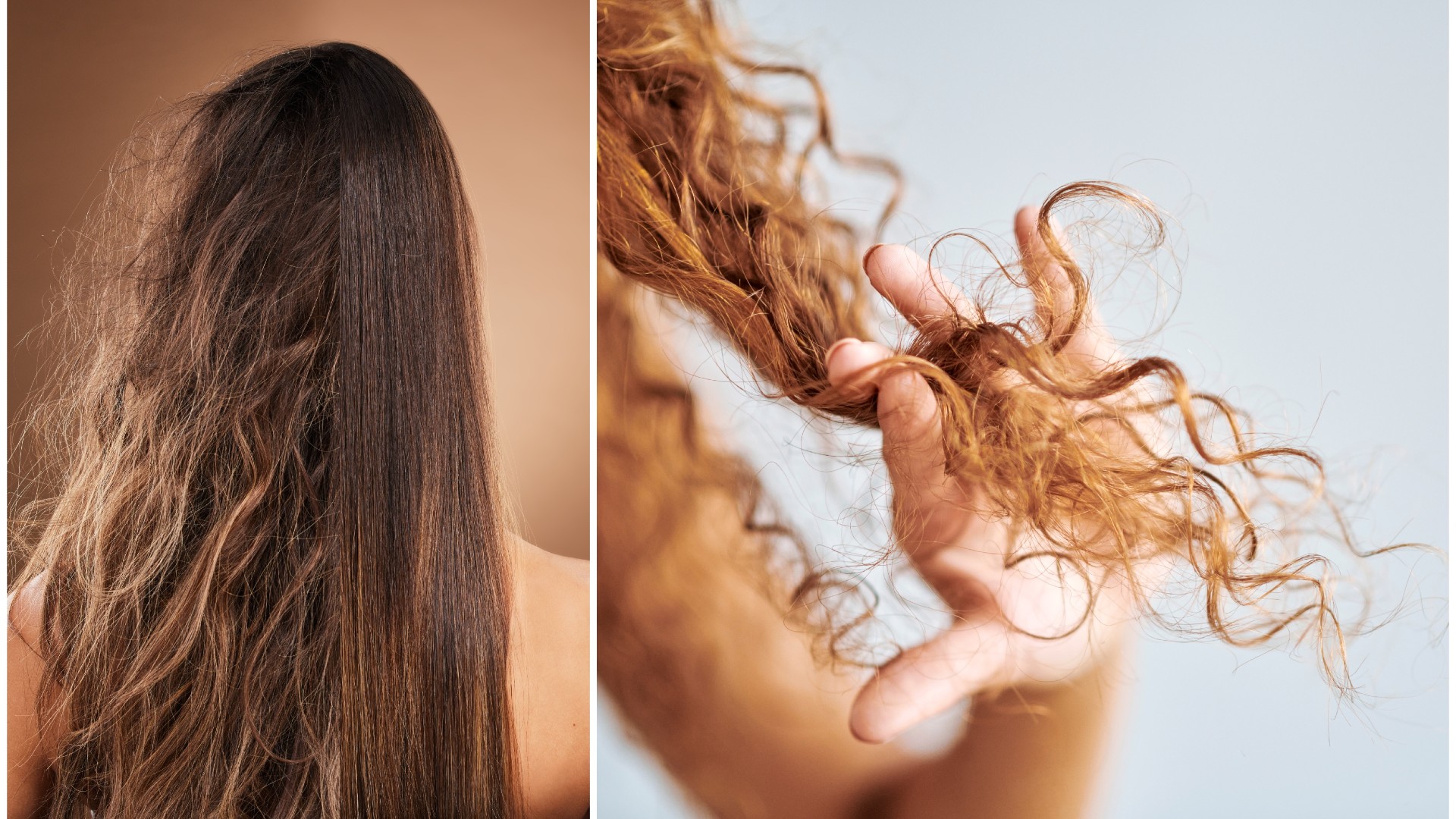

Hannah Baxter
As a person with tightly coiled hair, frizz is the bane of my existence. True heartbreak is getting a stellar blowout or silk press, only for said silky style to lose its luster shortly after and fall victim to humidity. The good news is that there's a whole world of anti-frizz treatments out there, and the best ones can practically humidity-proof your hair all while moisturizing and ensuring that your strands stay shiny.
Anti-frizz treatments can come in a variety of formulas. From hair oils and serums to heat-protecting hairsprays, there's really a product out there for every person, hair type, and texture. To kick frizz to the curb and get the silkiest hair of your dreams, read ahead to find 11 of the best frizz-fighting hair products out there, plus insights from experts on what causes frizz and what to look for in an anti-frizz product.
The Best Anti-Frizz Treatments
- Best Overall: Color Wow Dream Coat Supernatural Spray
- Best Budget: John Frieda Frizz Ease Extra Strength Hair Serum
- Best for Damaged Hair: Olaplex No. 6 Bond Smoother Leave-In Styling Hair Cream
- Best Serum: Chi Silk Infusion Silk Reconstructing Complex
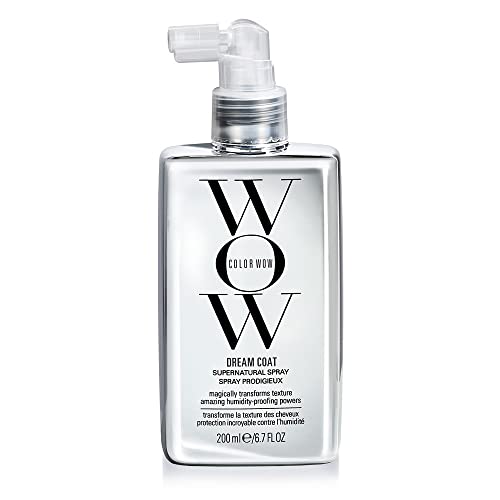
At one point, this cult-favorite spray has experienced many viral moments on TikTok, with users recording themselves spritzing the product onto their tresses only to later try applying water to the same area to really put the product’s frizz-fighting abilities to the test. Spoiler: for most people, it worked exactly as advertised and acted as a barrier that prevented outside moisture and wetness from entering the hair strand and ruining its silky smooth finish. That’s likely because it’s made with a proprietary anti-humidity complex that humidity-proofs the hair while adding shine. Glycerin is also a main ingredient, and it helps moisturize the hair so that frizz doesn’t become an issue in the first place.
Size: 6.7 oz
Key ingredients: Proprietary anti-humidity complex (prevents frizz); glycerin (moisturizes); chamomilla extract (protects color)
What I Like: Bottle design makes it easy to spray even when your hands are wet
What I Don’t: A little pricey
Review for MC: “As a curly girl, I’ve always struggled with keeping my hair from poofing or getting bigger from humidity. I straighten and/or put heat on my hair pretty frequently now, and I use this spray before blow drying or heat styling, and I have to say, it truly works as a shield that prevents humidity. It doesn’t dry out my hair when I follow it with a blow dryer, and a small amount really does go a long way.” — Danielle Jackson, Senior Beauty Writer
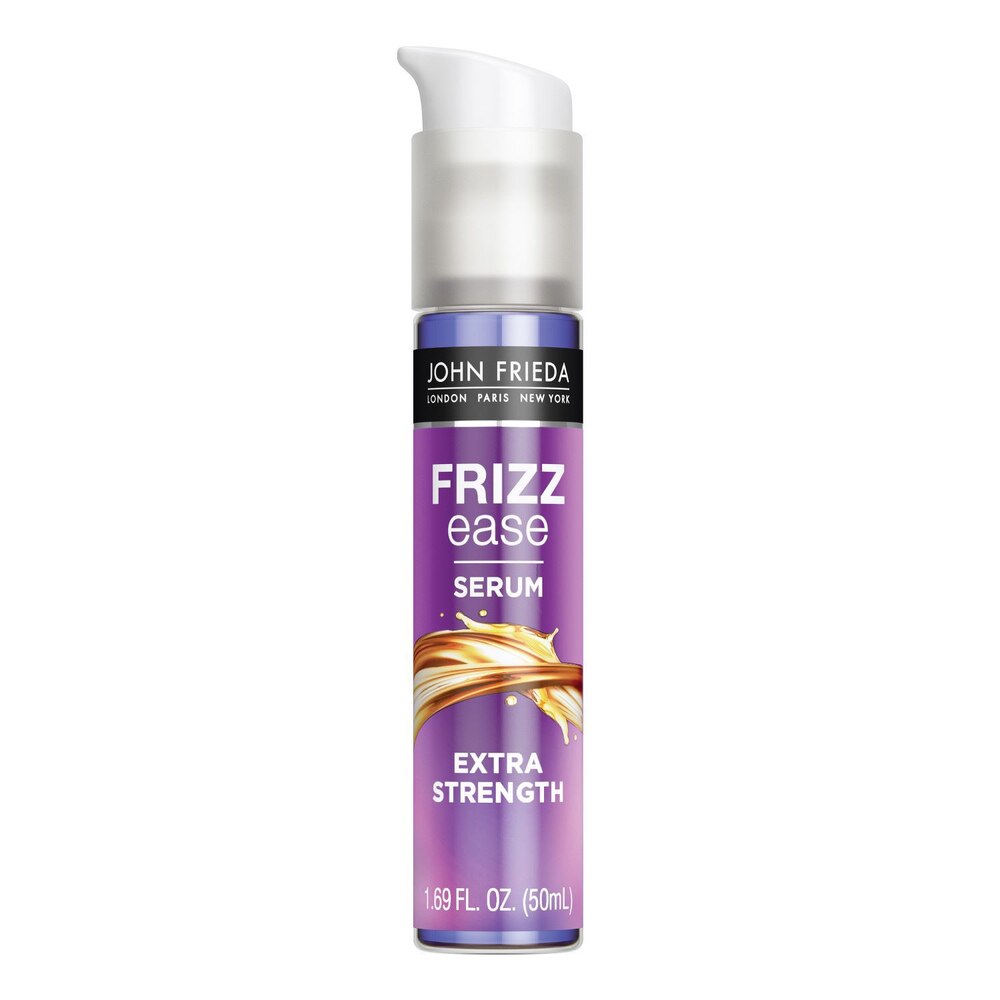
This is a drugstore staple that eliminates frizz and humidity while moisturizing and nourishing hair that’s already damaged. It uses a special blend of argan, coconut, and moringa oils to hydrate and add shine, and once your hair is dry and full of products, it can protect against humidity up to 90 percent.
Size: 1.69 oz
Key ingredients: Argan, coconut, and moringa oils (moisturizing)
What I Like: Cheap; lightweight so it doesn't weight down hair; nourishing
What I Don’t: May not be good at preventing frizz in really humid climates
Review for MC: “Humidity is enemy number one for my hair. When I try to smooth it out, it is immediately defeated and the frizz pops out everywhere unless I use this serum from John Freida. It's super lightweight (which is perfect for my high porosity strands) and I only need a dime-sized amount to cover everything. Plus, it's made with argan, coconut, and moringa oil to nourish my dry and damaged ends. The result is salon-worthy shiny and sleek hair. So if you ever see me out on a good hair day and think I've gotten a blowout done, know it's all me by way of my Dyson Airstrait and this serum.” — Audrey Noble, Contributing Beauty Writer
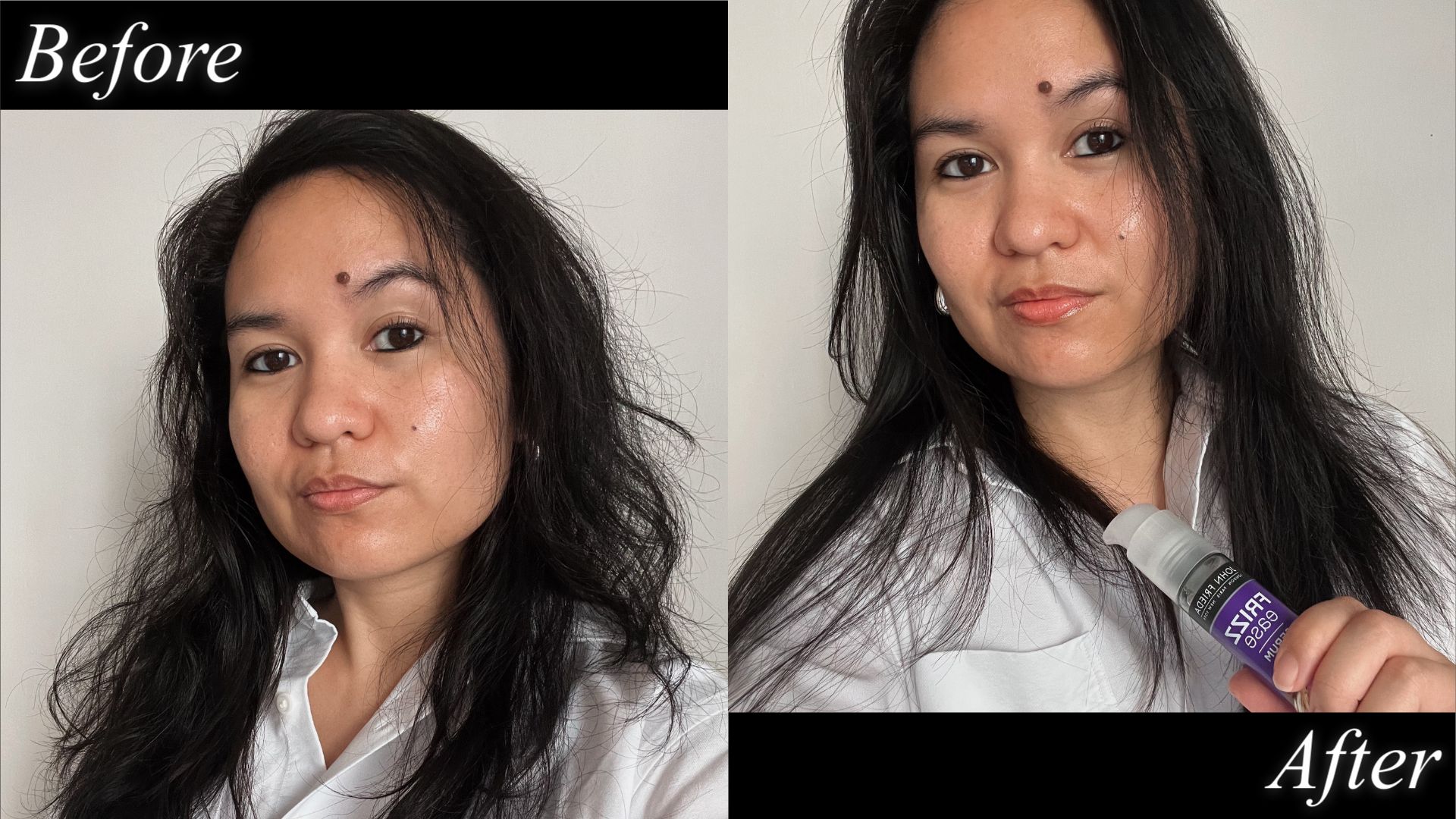
Audrey Noble testing the John Frieda Frizz Ease Extra Strength Hair Serum.
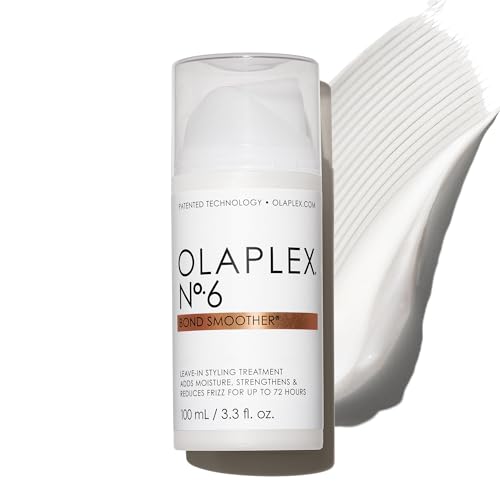
Olaplex is well-known for its game-changing, bond-building hair products—specifically the No. 3 Hair Perfector—but this styling cream also isn’t a bad one to have in your lineup. It still contains the brand’s bond-building technology, which is great if your hair is already damaged from harsh products, chemical treatments, or color services. Bond builders can also be counterintuitive and cause a bit of breakage if used incorrectly, but luckily, this one is a leave-in cream that’s incredibly easy to use and protects against frizz for up to 72 hours.
Size: 3.3 oz
Key ingredients: Bis-Aminopropyl Diglycol Dimaleate (repairs broken bonds)
What I Like: Works great on damaged or chemical-treated hair
What I Don’t: Can weigh down thin hair or make it feel oily
Review for MC: "I used this cream on some goddess braids that are slowly beginning to become frizzy after a month of wear, and I'll say that I was actually shocked to see a difference once I applied and brushed it. The exposed extensions immediately felt softer and a bit easier to brush. I was nervous about the product's scent, too—it's pretty strong at first, but it doesn't linger, and it managed to dissipate throughout the day." — DJ
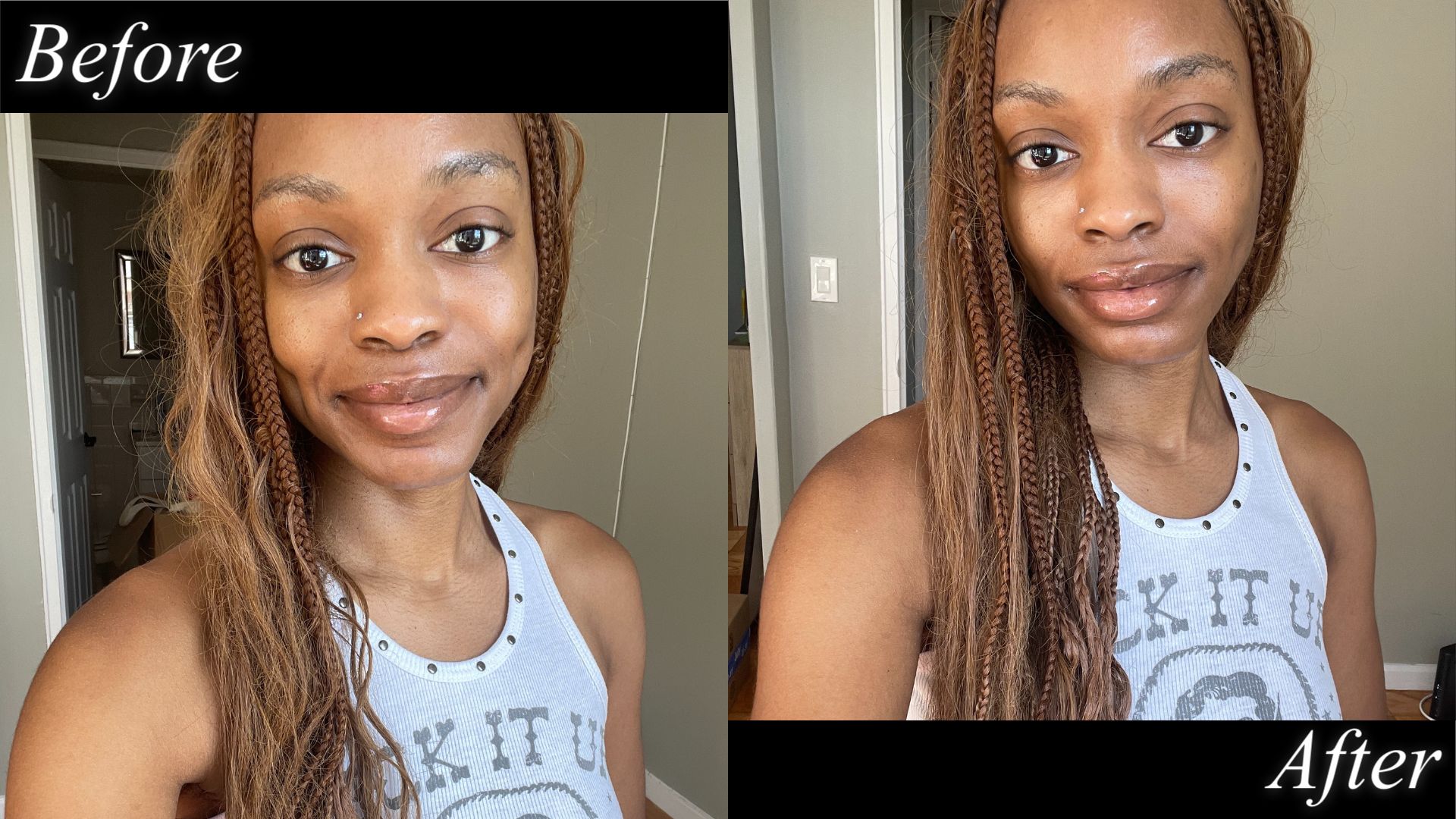
Danielle Jackson testing the Olaplex No. 6 Bond Smoother.
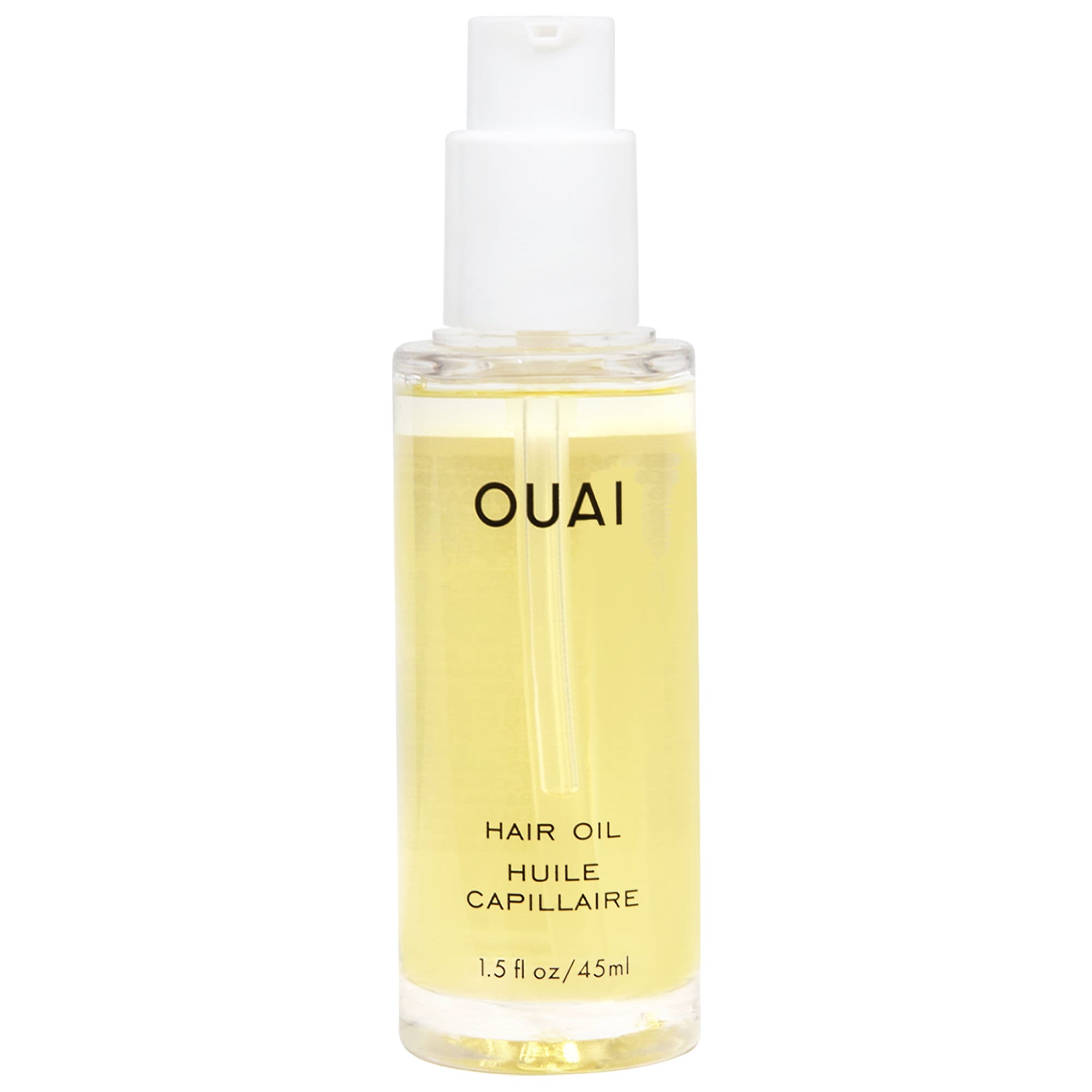
There’s nothing better than a hair oil that doesn’t quite feel like a hair oil. Plenty of oil formulas sit on the hair, weighing it down because the molecules are too heavy and big to actually penetrate the hair strand, ultimately making the hair feel greasy. Ouai’s formula, however, is extremely lightweight and thin enough to actually moisturize the hair without sitting on top and causing buildup. It also smooths the cuticle and provides protection from heat up to 450 degrees.
Size: 1.5 oz
Key ingredients: Ama and borage oils (moisturizing)
What I Like: Very lightweight for an oil
What I Don’t: Bottle is pretty small for the price; some reviewers say the scent is a little strong
Review for MC: "I'm very picky when it comes to hair oils. I don't like to use just any oil, since they can often sit on the hair and make it feel greasy. That said, I was actually pleasantly surprised by how light this one felt. Even immediately after applying it, I wasn't afraid that it would rub off onto other surfaces or stain my clothes, and it absorbed so quickly and made a difference on my tangled, frizzy extensions." — DJ
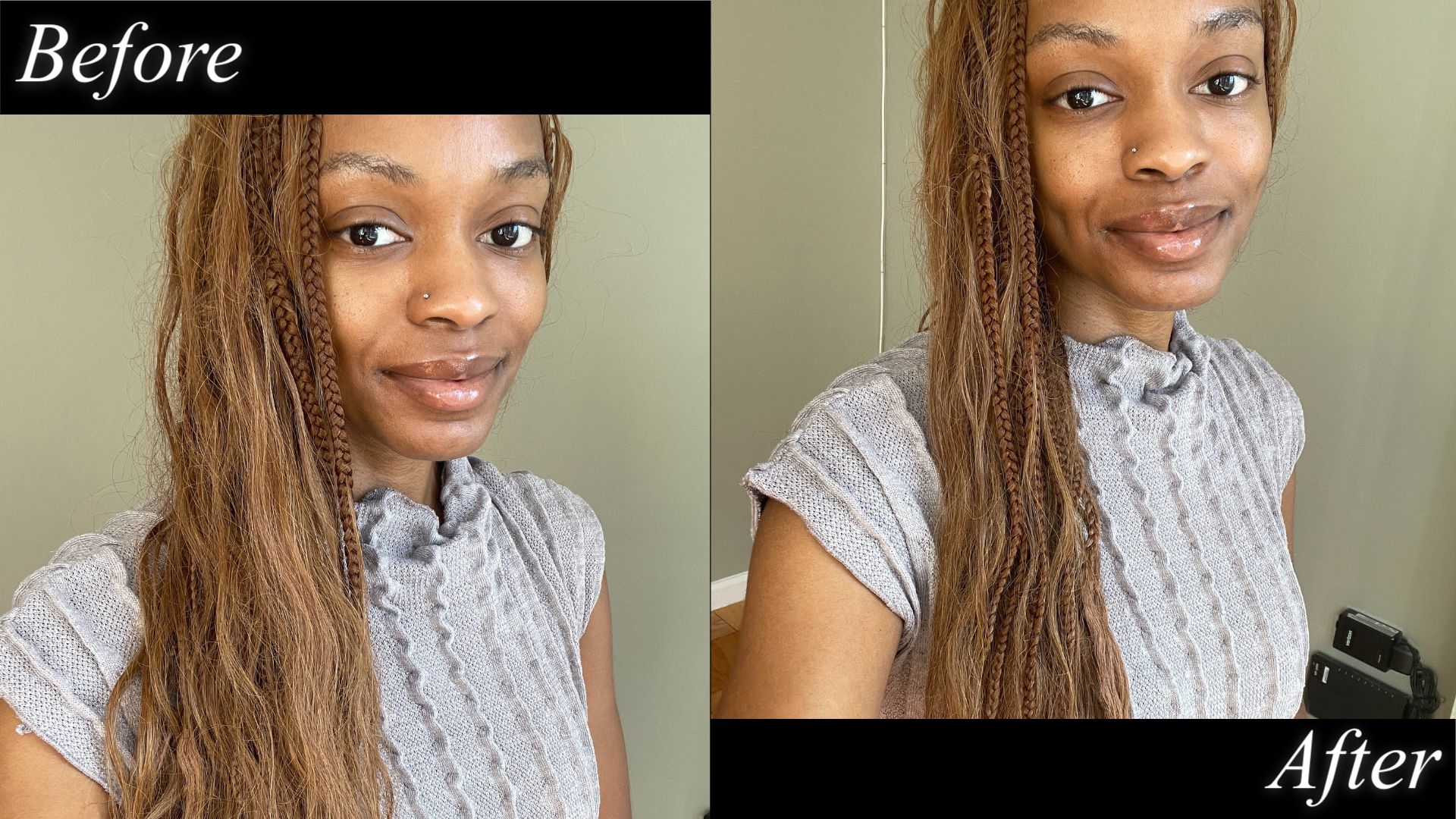
Danielle Jackson tests the Ouai Hair Oil.
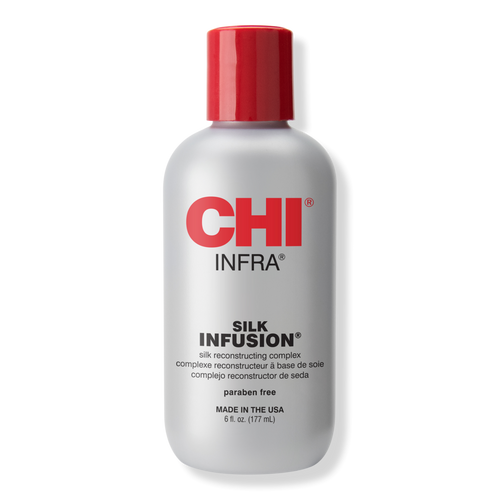
Don't be fooled: this serum has an oily texture but it doesn't sit on top of the hair or make it feel oily. In fact, it actually feels incredibly soft and silky, and it's enriched with silk, wheat, and soy proteins that soften the hair and add shine to it before blowing out or heat styling. Additionally, it's a moisturizing product that hydrates the hair from the inside out and protects against heat damage up to 450 degrees.
Size: 6 oz
Key ingredients: Silk, wheat, and soy proteins (strengthening and hydrating)
What I Like: This has a texture that almost melts into your hands; a small amount of product can go a long way
What I Don't: It can be make a mess if not stored properly
Review for MC: "I've gotten to the point where I can't straighten or blow dry my hair without this serum. It's so soft and I'm always impressed by how soft and straight my blowout ends up feeling even before I flat iron it. It has kind of an oily texture, but I love that it doesn't make my hair feel oily or weighed down, nor does it cause any product buildup or flakiness after a few days have passed." — DJ
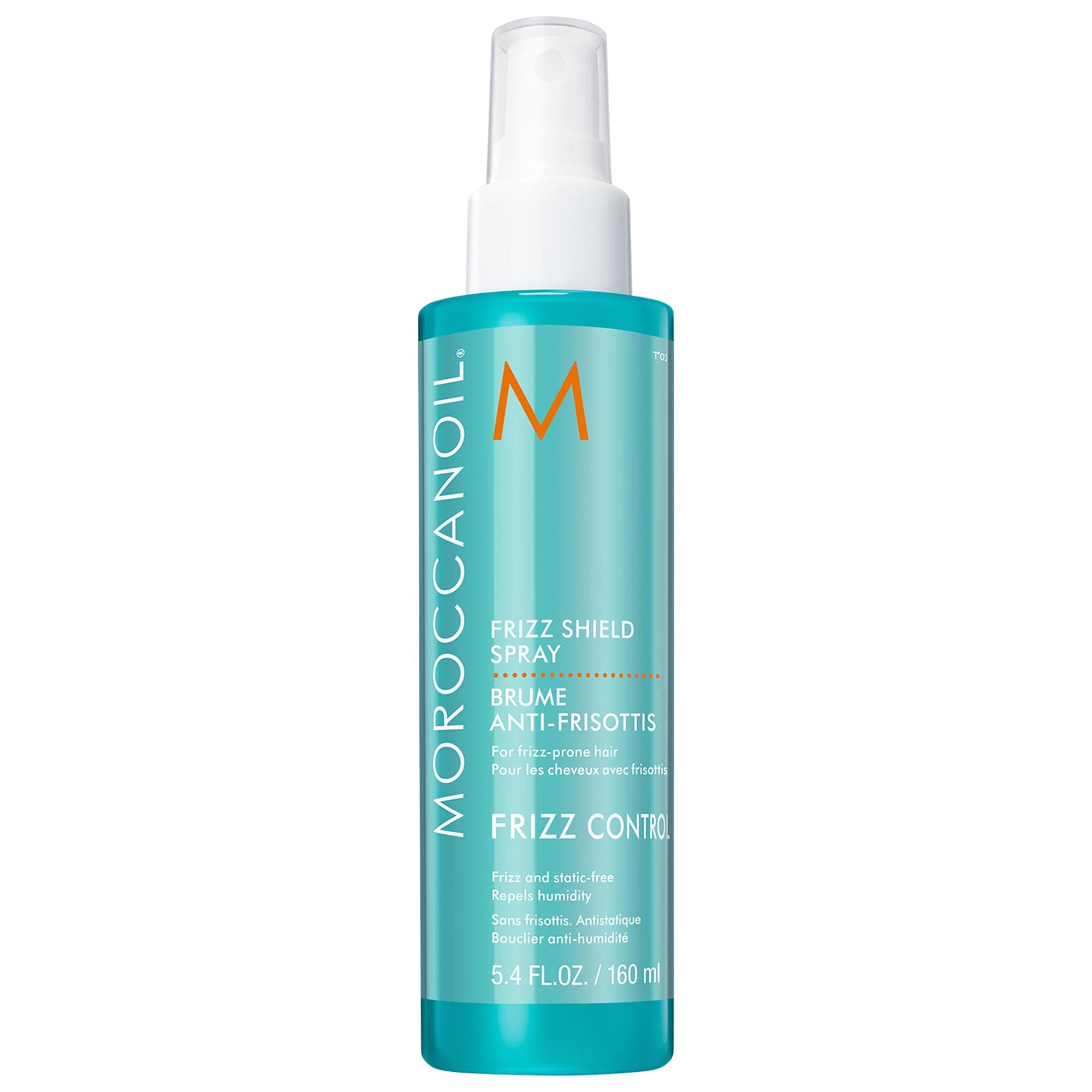
Moroccanoil's Frizz Shield is basically a do-it-all formula that hydrates and adds shine back into the hair while also creating a barrier around the hair strand to prevent moisture from exiting or entering. Not only does it work to protect the hair from frizz often caused by heat and humidity, it also provides heat protection up to 450 degrees and can leave the hair looking and feeling super silky and glassy.
Size: 5.4 oz
Key ingredients: Argan oil (boosts shine); upcycled jackfruit extract (prevents frizz and damage); HydroResist Technology (creates a barrier that blocks moisture from entering the hair strand)
What I Like: Easy to use; light texture
What I Don't: The scent might be overpowering if you don't like fragrance
Customer Review: "I’ve been using [this] for a few weeks now, and I’m honestly impressed! My hair tends to get frizzy especially in humidity but this spray keeps everything smooth and in place without feeling crunchy or stiff. It has a lightweight formula that doesn’t weigh my curls down, and I love that it adds a soft shine while locking out the frizz. I’ve used it on both straightened and natural styles, and it worked beautifully on both. Plus, the scent is light and fresh, not overpowering. I also noticed my hair held up longer throughout the day, even on windy or rainy days. It’s definitely become a staple in my hair routine!" — Sephora
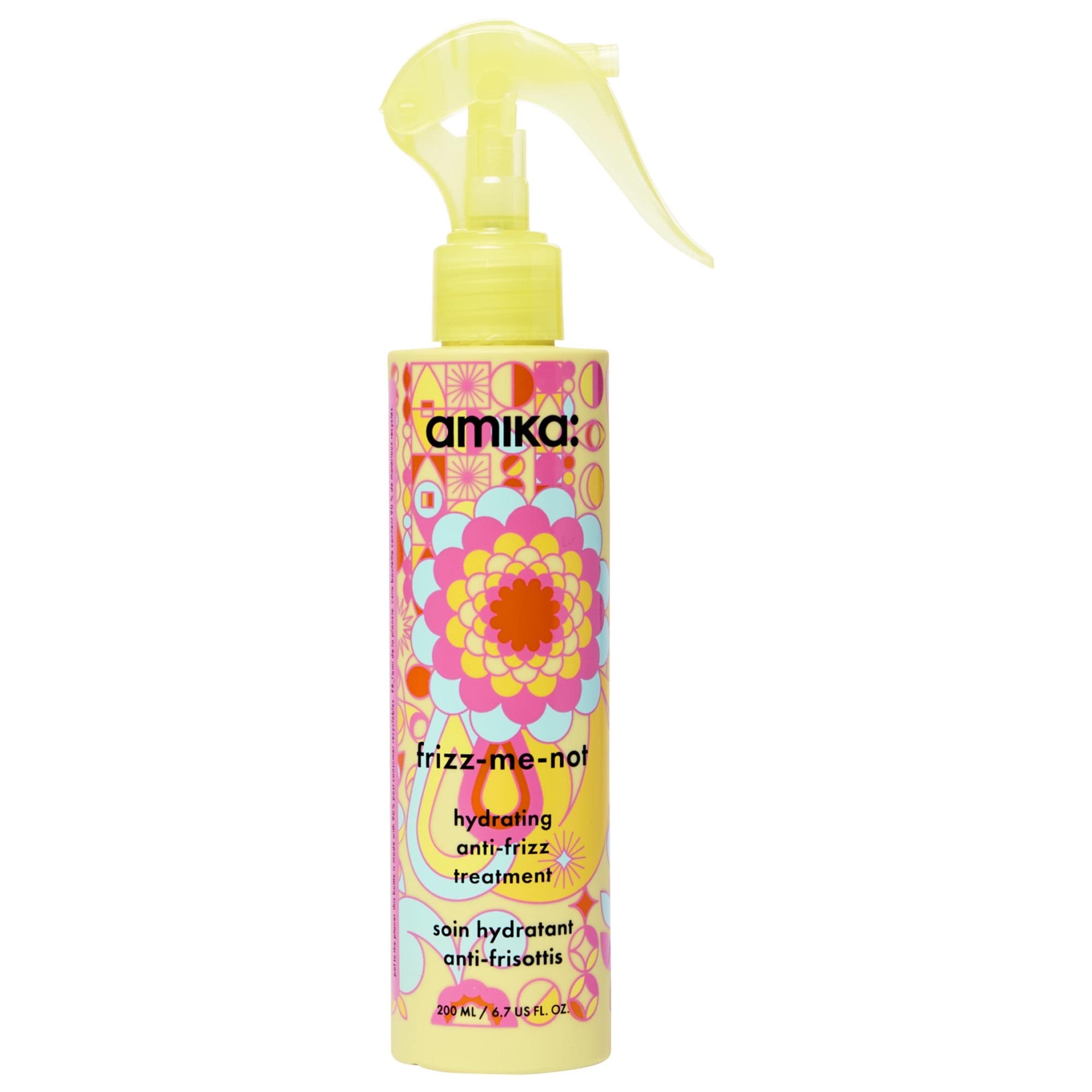
I can’t think of too many things that are worse than a blowout or silk press caving to humidity and frizzing up before you’ve even had a chance to fully enjoy it. Keeping your hair glassy and straight may sometimes seem impossible, but amika’s frizz-fighting treatment really acts as a barrier to keep the cuticle sealed and keep out excess moisture. It’s heat activated, which means you’re likely to see better results if you’re using it on hair you plan on blow drying, straightening, or curling, but it also protects against heat up to 450 degrees and keeps the cuticles on your hair smooth for up to three days.
Size: 2 oz
Key ingredients: Sea buckthorn, hydrasoft smoothing complex (hydrating); extended humidity shield (blocks humidity)
What I Like: Thin texture; no sticky residue
What I Don’t: You might not see the best results if you don’t like to apply heat to your hair
Customer review: "This has become a staple product for me during the summertime! I notice with a lot of other anti-frizz treatments, they tend to leave my hair greasy. But, this one does not do that. Just leaves me with soft, shiny hair." — Sephora
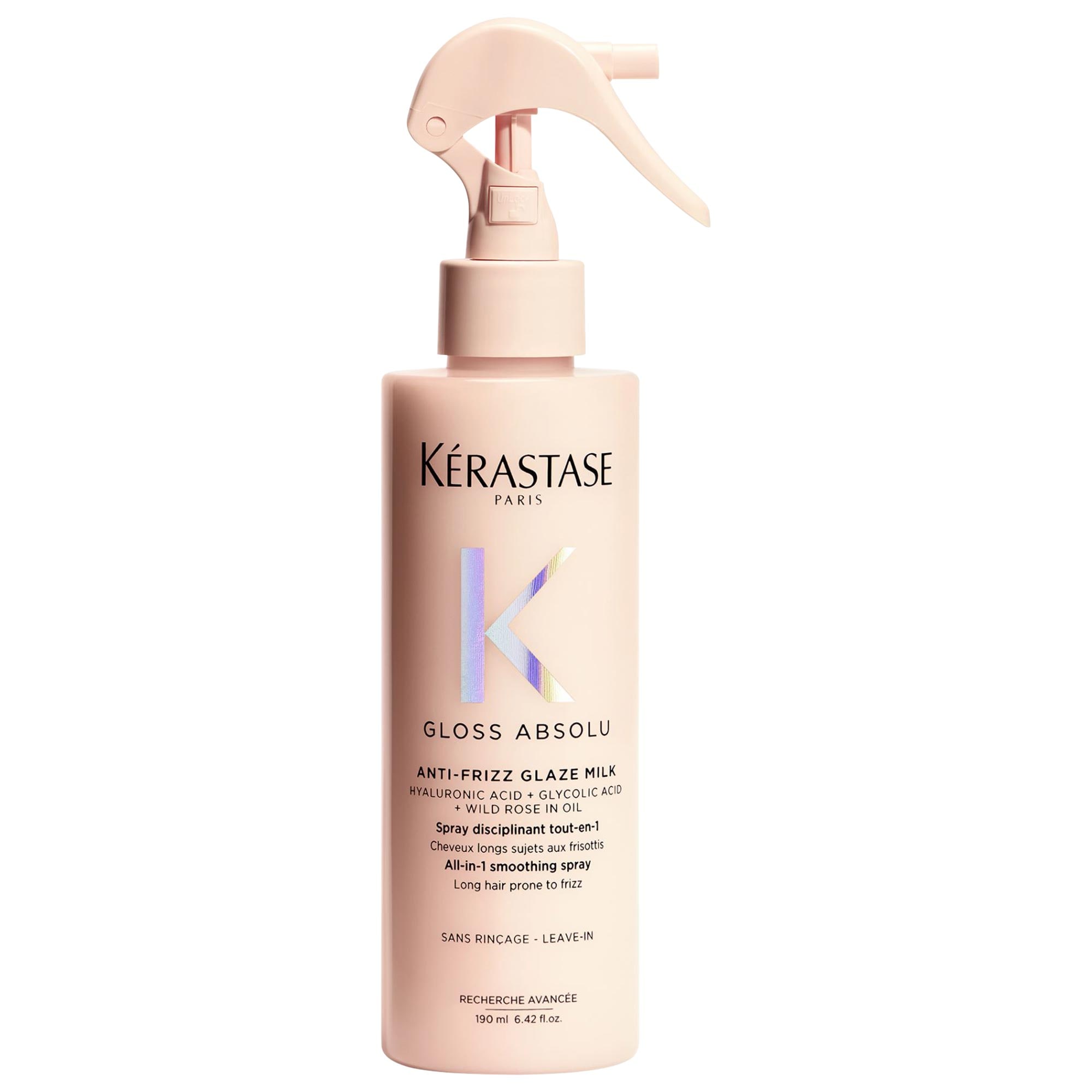
This is another all-in-one product that provides three benefits for the price of one. For people with straight and wavy hair textures, the Kérastase Gloss Absolu Frizz Spray can hydrate dry hair while also providing heat protection from tools that get as hot as 450 degrees. It also fights frizz by locking moisture into the hair and giving the hair shaft a smooth, shiny finish for those days when you want your hair to look extra glassy.
Size: 6.42 oz
Key ingredients: Hyaluronic acid (moisturizing); glycolic acid (exfoliating); wild rose oil (reduces frizz and adds shine)
What I Like: Lightweight; makes the hair look glossy and shiny
What I Don't: Reviewers say the fragrance is really strong; not the best option for people with thicker, curlier textures
Customer review: "Out of all the anti-frizz sprays, this worked the best on my coarse, semi-wavy hair. The formula is light, non-sticky, and my hair feels wonderful." — Sephora
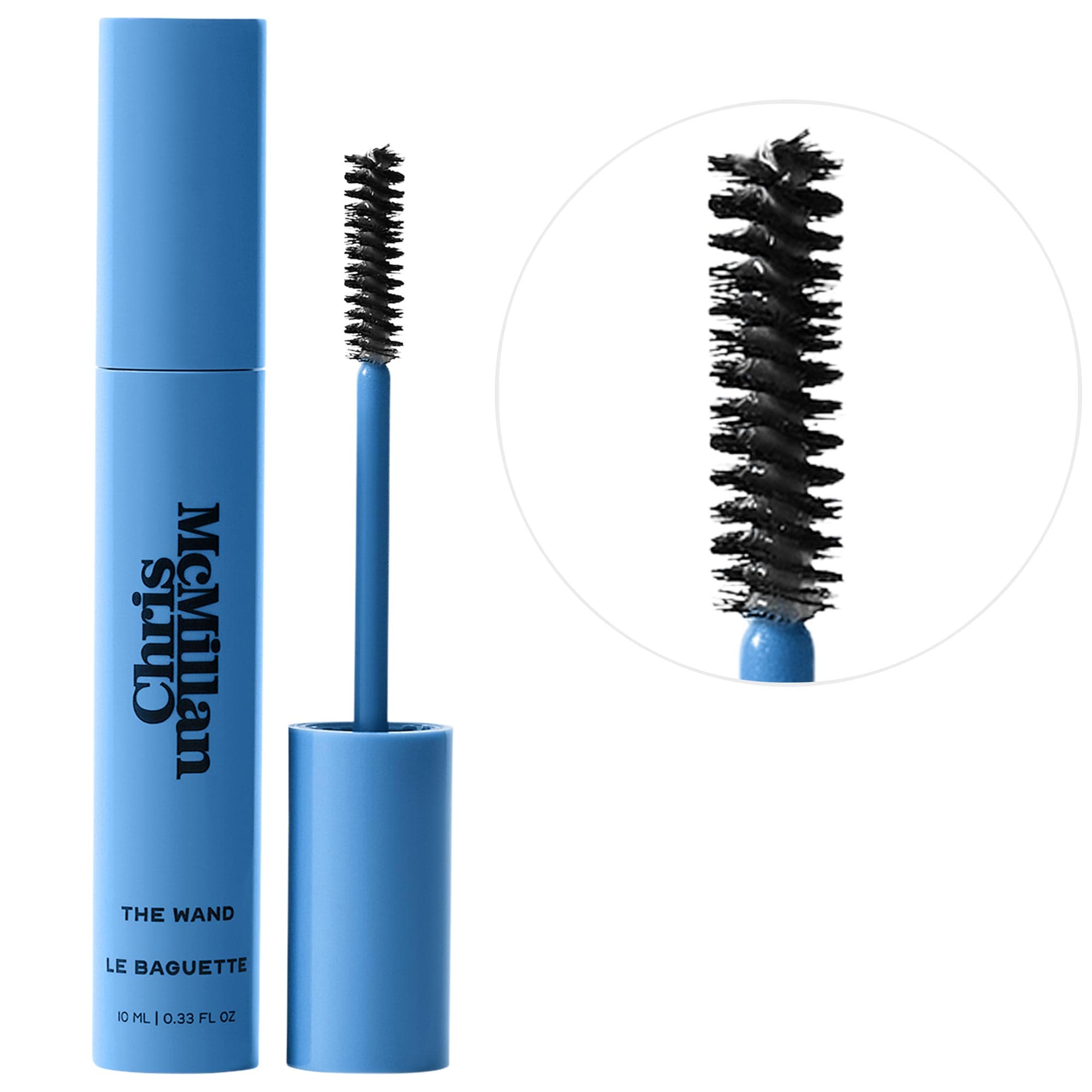
Sometimes you just have a few rogue hairs around you hairline or on either side of your face that just need to calm the f*ck down. This new smoothing brush from celebrity stylist Chris McMillan is an elevated solution for those of us who have previously reached for a clear brow gel to tame frizz. It's perfect for throwing in your bag and using to touch up your hair throughout the day, and the flexible formula works on any hair texture. Marie Claire Beauty Director Hannah Baxter swears by it for her wavy 2b hair, especially on day three to keep it looking fresh.
Size: 0.33 oz
Key ingredients: HS3™ Complex (heat protection, adds shine, smoothes); hyaluronic acid (hydrates); jojoba oil (supports hair health)
What I Like: Easy for on-the-go touch-ups; innovative design; chic packaging
What I Don't: Not suitable for all over frizz; relatively small size
Customer review: "This wand works fantastic! I have short pieces of broken hair around my face from wearing my sunglasses all the time. Like magic...my flyaways are gone! Thanks Chris McMillan for developing this product. This must be what you use on your movie stars! Now the rest of the world can have gorgeous hair too!" — Sephora
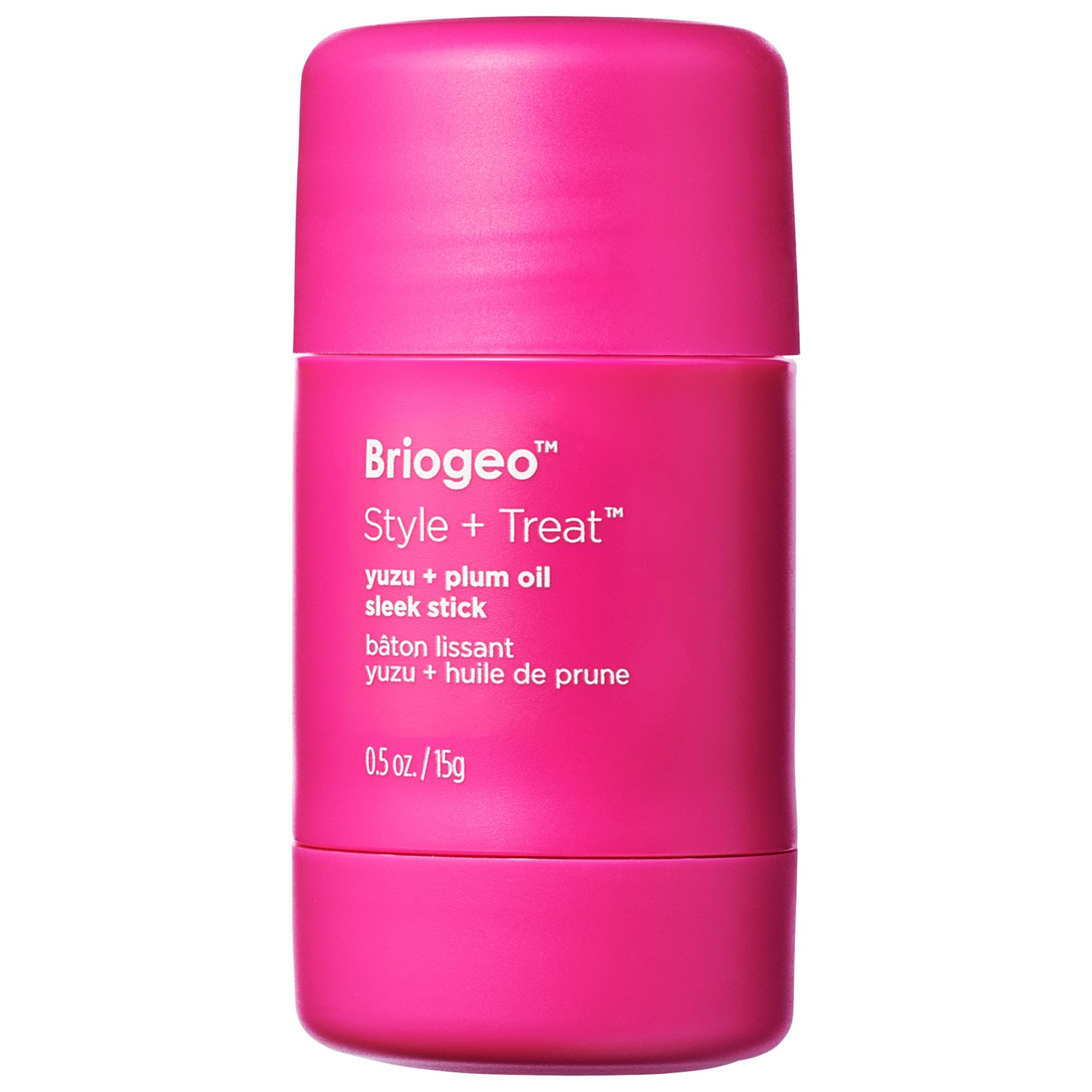
Loose styles and blowouts aren't the only styles that often see frizz as an issue. It can also be present in sleek styles like ponytails and buns, and if that's the case, it's helpful to have something on hand that'll get rid of flyaways and keep your hair in place. This stick from Briogeo does just that without pulling or being too harsh on the hair. It's made with hydrating plum oil that helps it to glide smoothly on the hair without catching, and it does a great job of laying down those pesky baby hairs without drying out the hair or flaking.
Size: 0.5 oz
Key ingredients: Plum oil (moisturizes); yuzu extract (antioxidant protection); super B-complex (reduces shedding and promotes hair health)
What I Like: Easy to travel with; non-messy; not harsh on the hair
What I Don't: Might not be strong enough to hold flyaways on thicker textures
Customer review: "I really like how easy this sleek stick is to use. It smooths down flyaways without making my hair feel sticky or stiff. The finish looks clean and polished, and it lasts all day for me. I also love that it doesn’t weigh my hair down, so it’s perfect for quick touch-ups." — Sephora
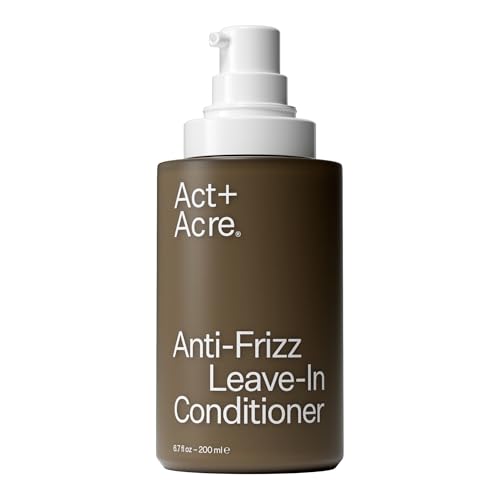
Sure, humidity is the number one culprit behind frizz, but hair that's dry or improperly moisturized tends to be more prone to frizzing up since the lack of moisture causes it to search for moisture in the air. This leave-in treatment prevents that by using a blend of squalane and seed oils to boost hydration that's later locked into the hair strand.
Size: 6.7 oz
Key ingredients: Squalane (detangles and protects against environmental damage); snow mushroom blend (hydrating); meadowfoam seed oil (locks in moisture)
What I Like: The bottle is a decent size and you get a lot of product for what you're paying
What I Don't: It has a scent that some users say is overpowering
Customer review: "I’ve been using [this] and I’m so impressed. My hair tends to get frizzy and dry, especially after air drying, but this seriously smooths everything out without weighing it down. It feels super lightweight—more like a serum than a traditional leave-in—and leaves my hair soft, hydrated, and shiny. I love that it’s silicone-free and still gives me a sleek finish without any buildup. Plus, it has heat protection up to 450 degrees, which is a nice bonus when I do use hot tools. It’s definitely on the pricier side, but a little goes a long way, and the results have made it worth it for me." — Sephora
What Causes Frizz?
Every strand of hair has an outer layer of cuticles that can lift and lay flat depending on how moisturized your hair is. Frizz is what occurs when said cuticle is lifted. “Frizz happens when the cuticle doesn’t lie flat, letting outside moisture in and making the hair swell unevenly,” says hairstylist Jennifer Korab. Per hairstylist Lia Hakim, whenever moisture from the air enters the hair shaft, it can cause the hair to lose its smoothness. Humidity is the most common culprit behind frizziness, though it can also be caused by your hair already being dry and improperly moisturized, heat styling, excessive use of chemicals, and even rough towel drying.
Both stylists agree that your natural hair texture can also play a role in how frizzy your hair gets. “Curly and coily textures are especially prone because their cuticles are naturally more open, and damage from the environment can make it worse,” Korab says. “Frizz is the hair’s way of showing it’s either too dry inside or soaking up too much moisture from the air.”
What Should I Look For In an Anti-Frizz Product?
Hakim says you should think of an anti-frizz product as both a shield and a moisturizer: you want something that can smooth and seal the cuticle while also addressing dryness within the hair shaft. “Look for lightweight oils like argan or jojoba, smoothing agents like silicones (for those who are comfortable with them), or newer silicone alternatives such as dimethicone-free serums,” she says. “Humectants like glycerin can help, but in very humid climates you’ll want them balanced with sealing agents to prevent the hair from puffing up.”
You should also be prepared to consider your hair type before just picking up any product that claims to combat frizz. Korab says that people with fine or straight hair should use serums and lightweight products that won’t sit on top of the hair, while people with curlier textures should reach for “curl creams, gels, or anti-humidity products that not only fight frizz but also define their natural shape.” She adds, “the key is finding a formula that seals the cuticle, keeps moisture balanced, and suits your hair’s unique needs.”
How Can I Prevent Frizz In the First Place?
Sometimes frizz seems inevitable, but there are actually ways to prevent it from occurring. To prevent frizz when blow drying or heat styling your hair, always make sure you’re using a heat protectant before allowing any heat to touch your hair. Hakim also recommends blow drying the hair with a nozzle attachment and directing airflow downward along the hair shaft to keep the cuticle flat.
As previously stated, rough towel drying can also be a culprit of frizz, so when your hair’s wet, try drying it with a microfiber towel that’s easier on your strands and doesn’t cause as much friction as a traditional bath towel. Lastly, frizz is often a result of hair that’s already dry—if your hair is dry, it’s more likely to try and suck moisture from the air, so a great way to prevent hair from poofing or becoming frizzy is to ensure that it’s properly moisturized in the first place via conditioners, leave-in moisturizers, serums, or masks.
Why Trust Marie Claire
For more than 30 years, Marie Claire has been an internationally recognized destination for news, fashion and beauty trends, investigative packages, and more. When it comes to the products Marie Claire recommends, we take your faith in us seriously. Every product that we feature comes personally recommended by a Marie Claire writer or editor, or by an expert we’ve spoken to firsthand.
Meet the Experts

Jennifer Korab is a New Jersey-based hairstylist and founder of Renaissance Salon & Spa.
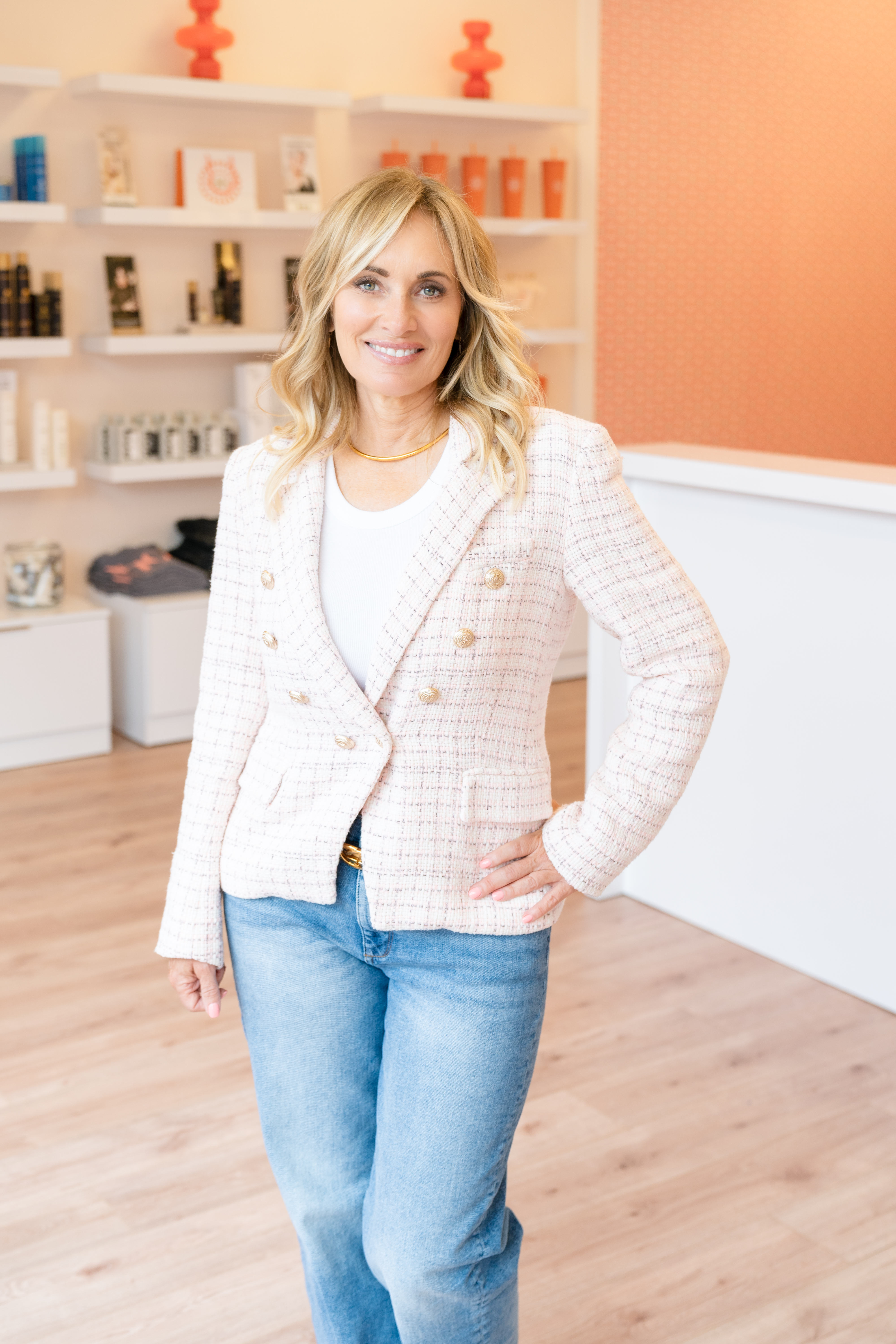
Lia Hakim is a hairstylist and founder of totally hott salon and hott blowdry and beauty lounge in Westchester, New York.
Get exclusive access to fashion and beauty trends, hot-off-the-press celebrity news, and more.
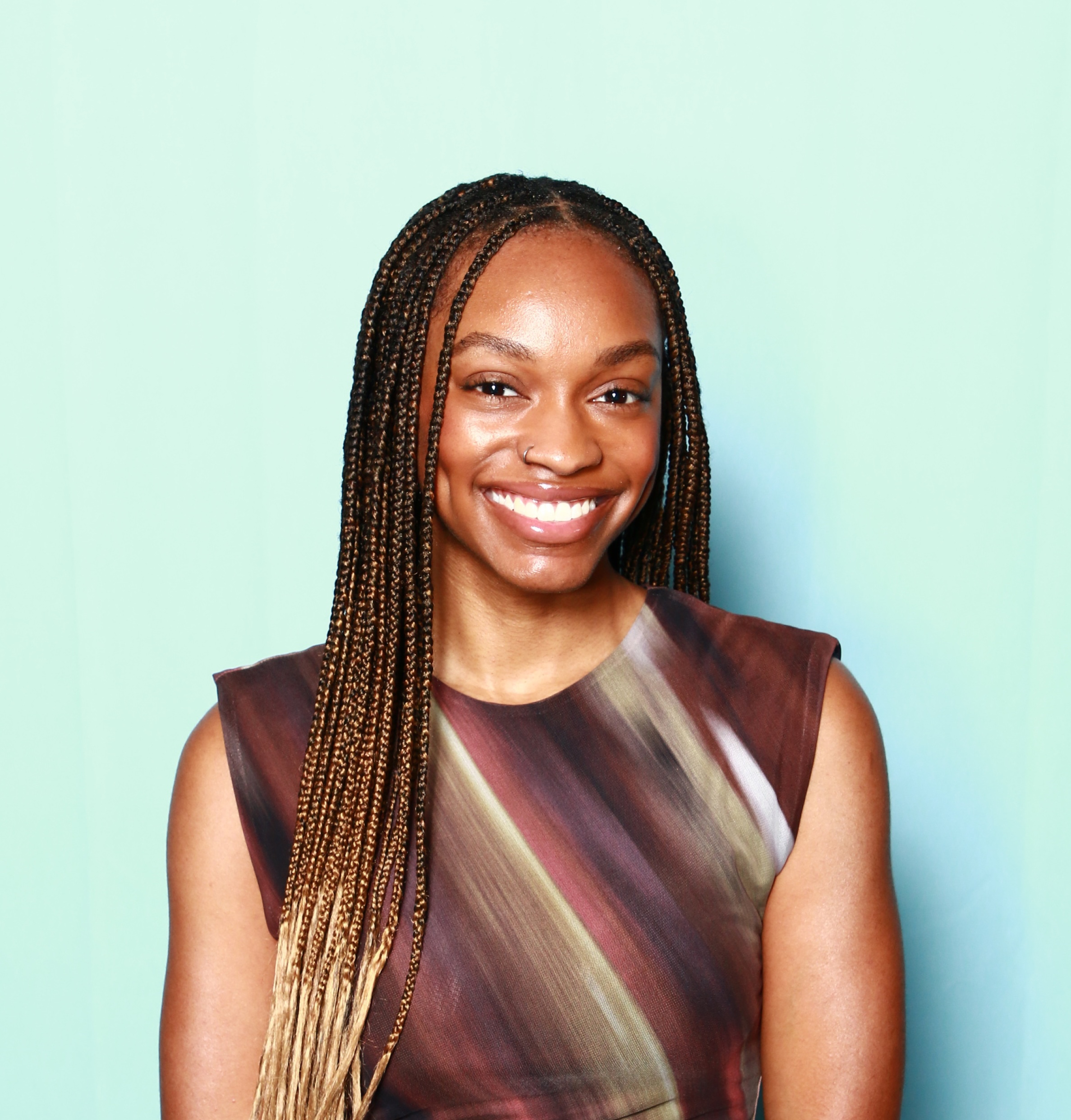
Danielle Jackson is the senior beauty writer at Marie Claire. She has nearly a decade of experience covering beauty, lifestyle, and entertainment and was previously the senior beauty editor at Women's Health, where she thoughtfully covered topics related to skincare, haircare, aesthetics, and wellness. Before that, she spent three years as an assistant beauty editor at PS, and in the years since, her work has appeared in titles like Vogue, InStyle, Glamour, and more. Danielle graduated from the University of Georgia with a BA in English, and has lived in Brooklyn for almost ten years. When she's not writing, you can find her reading romance novels and talking about sunscreen. You can find her on Instagram @danielleknecole.
- Hannah BaxterBeauty Director